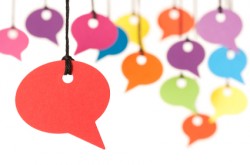 Many marketing departments focus on messaging to prospects to generate sales and then halt communications once the prospect becomes a customer. However, communicating with new customers once the sale has closed is critical. This is when continued relationship-building is more important than ever in order to build loyalty and increase the potential for future sales.
Many marketing departments focus on messaging to prospects to generate sales and then halt communications once the prospect becomes a customer. However, communicating with new customers once the sale has closed is critical. This is when continued relationship-building is more important than ever in order to build loyalty and increase the potential for future sales.
Knowing how to carefully cultivate relationships between the “asks” is important in order to retain customers, encourage new leads, seek referrals or build community, according to Chris Brogan, president of Human Business Works. For your customer to know that you are available to them can make all the difference in what could become your next sale. Additionally, we all know that it’s less expensive to retain customers than to acquire new ones.
For instance, if you are in the insurance industry, after you’ve established loyalty with your customer you have the opportunity to cross sell and up sell other product lines. Maybe you have a company blog that shares success stories about how you helped other clients in a disaster. Engage your customers in your blog. This type of online content can build your audience or online community. Customers often appreciate receiving such useful information, which they deem preferable to receiving straight marketing messages.
Continuity Campaigns
Regular client communication is often delivered through continuity marketing, also known as drip marketing. This can include a series of simple, timely and relevant personalized communications delivered over the life of your customer relationship, building loyalty. Regularly scheduled communications such as e-mails, seminar invitations or policy review invitations can let your customers know that you are thinking of them.
According to Convergys’ 2011 U.S. Scorecard Research release, as reported by 1to1 Media, these days customers are telling companies how to contact them and when, and want their marketing communications served up based on their own preferences. This study points out that 75% of those surveyed prefer the email channel. However, they may not have time to read every e-mail they receive; so you should limit correspondence to only that information which pertains to your customers’ interests.
How is this done?
To kick-off your customer communication efforts, it’s very important to confirm your initial information. As you are on-boarding your customer, validate their name and address – after all, you are only as good as your data. Determine the channels through which customers prefer to receive targeted communications – so you can deliver at the right time with the right message. During the first few weeks, consider sending your client a thank you letter, customized welcome kit, e-mail or alert. Continue these useful messages on an on-going basis. The goal is to boost the customer experience and improve loyalty.
You want to ensure that when choosing how to communicate with your customer you are perceived as being “top-of-mind” without being a “pain-in-the-neck.” Don’t alienate them with irrelevant communications. Instead, put yourself in the role of educator – addressing your client’s needs. You want to be the go-to resource when they need additional information.
Keep the customer’s demographics and life stage in mind when tailoring your marketing communications. Remember that relevant messages can introduce these existing customers to additional products when they need them. Building on the insurance example, if your customer already purchases auto insurance from your company and is now getting married, you may want to get them information on homeowner’s insurance. Similarly, if your client is having a baby, you might talk to them about life insurance. The goal is to make sure that they know what you have to offer.
Next, consider the format or channel through which you will communicate. Does your audience prefer printed materials like newsletters, letters or postcards; or do they prefer e-mail? Ideally, any of these channels would have links (via URLs, PURLs or QR codes) to online or mobile messages that would lead them to additional content, resources and tools. Localize and personalize the message with the appropriate sales person’s photo and contact information on the piece, and for online communications be sure to include social sharing buttons.
Always comply with CAN/SPAM laws and check against opt-out and do-not-call lists. Breaking these rules not only puts your company in jeopardy, but also upset potential customers when they are targeted against their wishes.
Finally, a successful continuity marketing campaign always measures which messages are most effective. Track your results: what got the most comments, the most downloads and the most click-throughs? Adjust if necessary. Remember that the success of your campaign depends on regular communication that continues over time. Though new priorities may surface, the campaign should be on-going to achieve all of the benefits.
Managing the on-going communication
Successful relationship-building customer communication is sustained over time – months, even years. At the same time, such continuity campaigns become complicated to manage especially as new customers enter the mix. Marketing Resource Management Systems (MRM) are helpful tools for managing continuity campaigns. Communications materials are created and managed in the system. Within these systems, field agents can localize and personalize messages which are automatically routed for approval. Campaign components are scheduled, lists are managed, all from a centralized application.
Parting Thoughts
The goal of this post is to give your company ideas about how to build relationships beyond the sale. How do you already communicate with your existing clients?
Tags: QR Codes, PURL, MRM, Continuity Campaigns, marketing resource management




